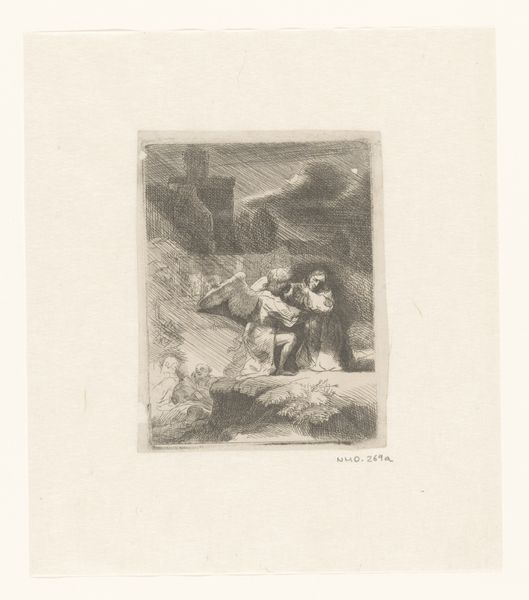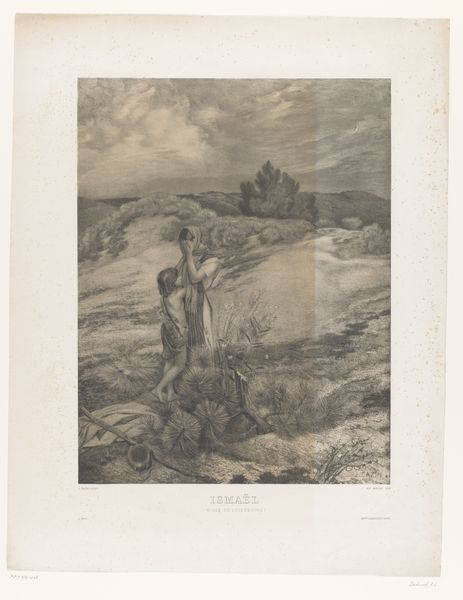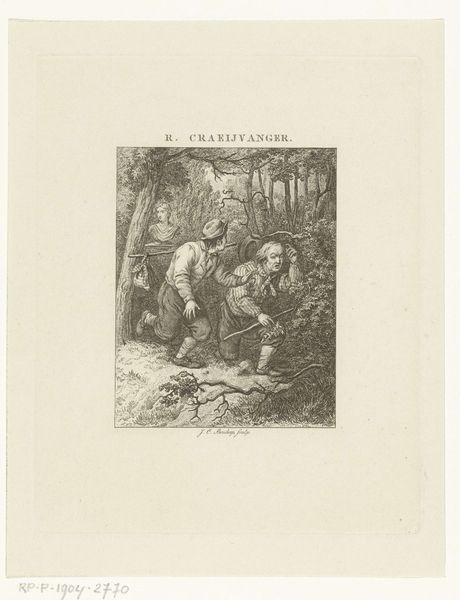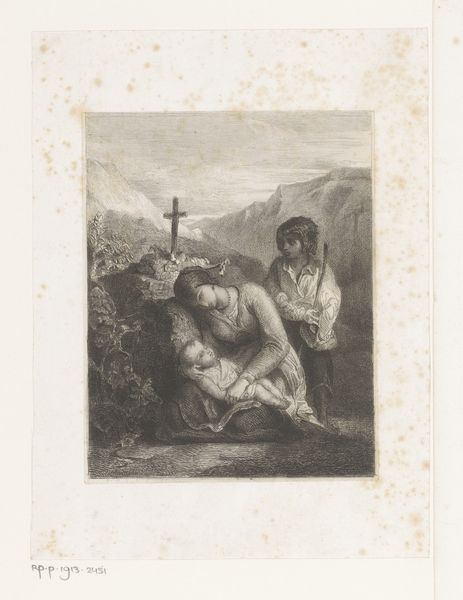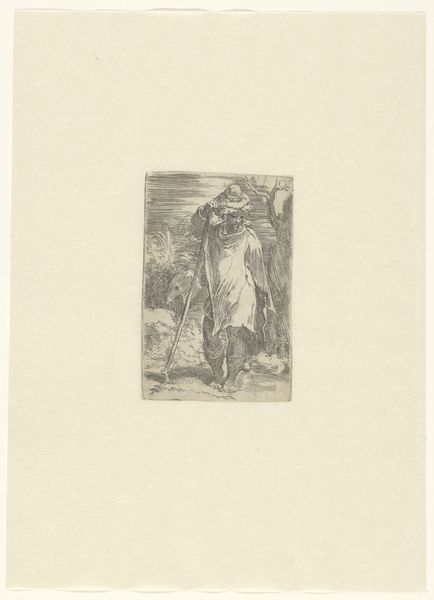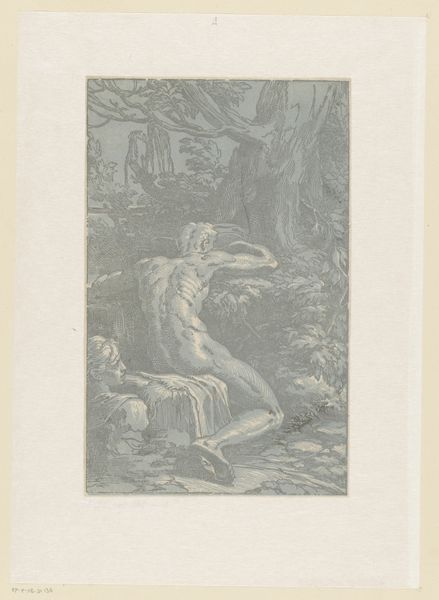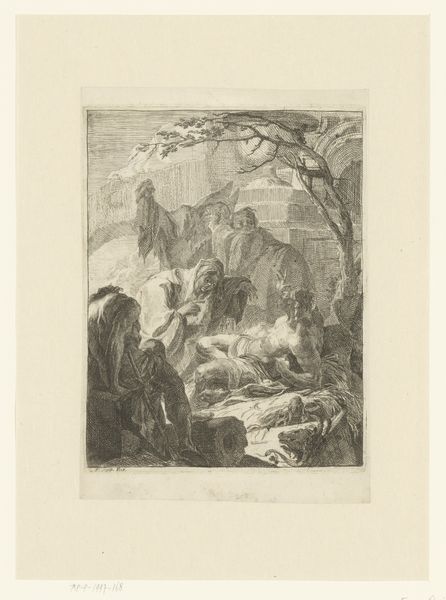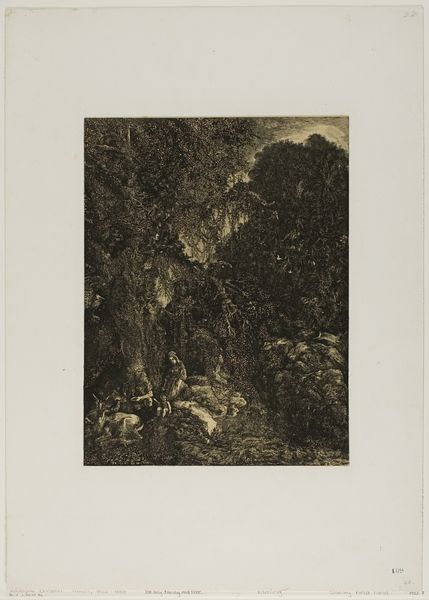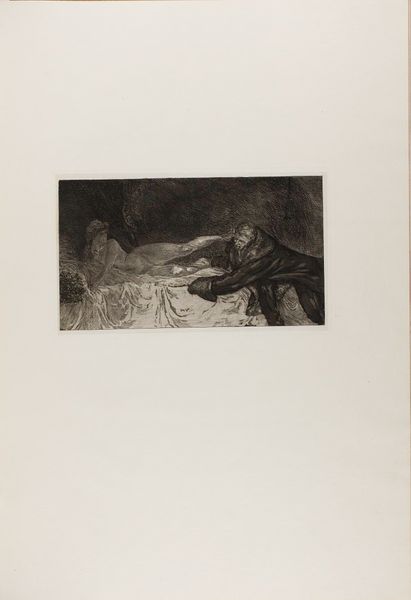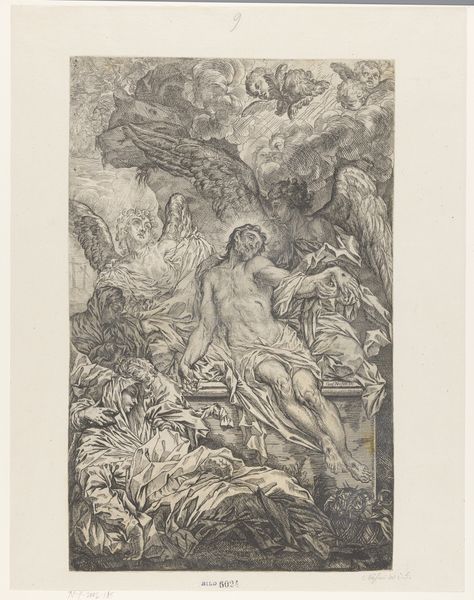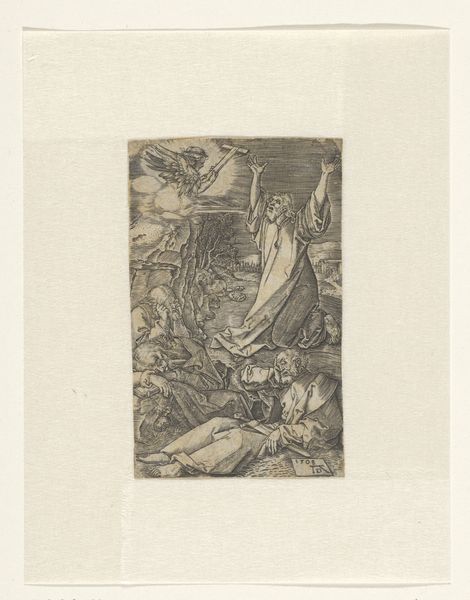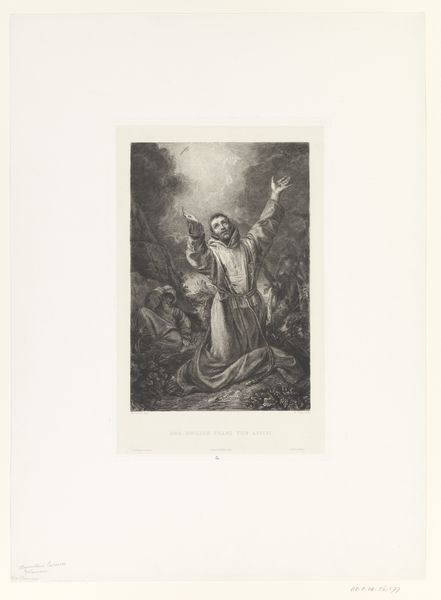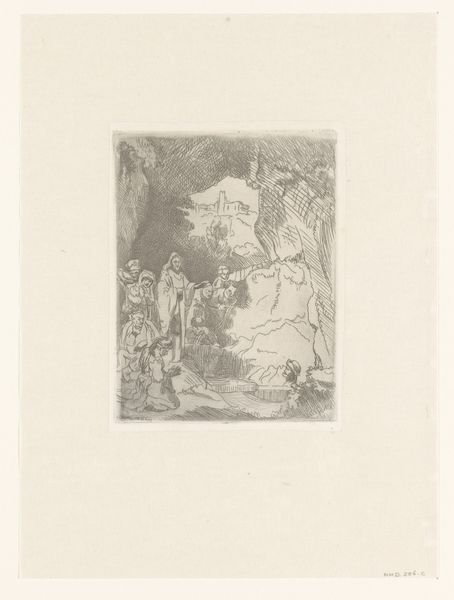
print, engraving
# print
#
old engraving style
#
landscape
#
figuration
#
form
#
line
#
history-painting
#
engraving
#
realism
Dimensions: height 330 mm, width 245 mm
Copyright: Rijks Museum: Open Domain
Curator: This engraving, titled "Twee ridders in harnas verdedigen elkaar in een rotslandschap," or "Two Knights in Armor Defending Each Other in a Rocky Landscape," was created by Auguste Numans sometime between 1833 and 1879. What are your initial thoughts? Editor: My first impression is the sense of vulnerability despite all the armor. They’re huddled together in a harsh, unforgiving landscape, which to me suggests protection isn't just physical—it's emotional and communal. Curator: That’s a astute reading. The composition emphasizes this; notice how the rugged terrain and the castle atop the cliff dwarf the figures. The knights become a part of, but also threatened by, a grander narrative and the weight of established institutions. It reflects how power functions, perhaps critiquing chivalry as a system. Editor: Exactly, and I find myself drawn to the ways their individual identities blur. Their intertwined pose rejects a sense of heroic individuality; they appear dependent, almost shadows of one another, perhaps mirroring the symbiotic or even codependent relationships born from hierarchical power dynamics. Curator: That dependence has interesting implications when viewed through a historical lens. Images of knights, particularly in the 19th century, often evoked nationalism. Were Numans’ choices also a social commentary, perhaps subtly questioning the romanticized view of knightly virtues in the face of societal issues like poverty or inequality? Editor: It certainly opens up that possibility. Think about what the armor symbolizes here, especially when their environment offers limited resources. Perhaps it is protection but at the expense of freedom? Or consider whether there’s a deeper queer reading to be made: a cloistered alliance in a hostile public sphere. Curator: Those are both compelling questions and directions for thinking about the political landscape around this artwork’s production. It reveals how art objects of the past, and the institutions like this museum displaying them, were and are very active participants in our society. Editor: Agreed. What might have initially seemed a conventional historical tableau becomes layered with relevant, often pressing, conversations on the way protection, community and gender play out. I wonder what else might await in these rocks.
Comments
No comments
Be the first to comment and join the conversation on the ultimate creative platform.

